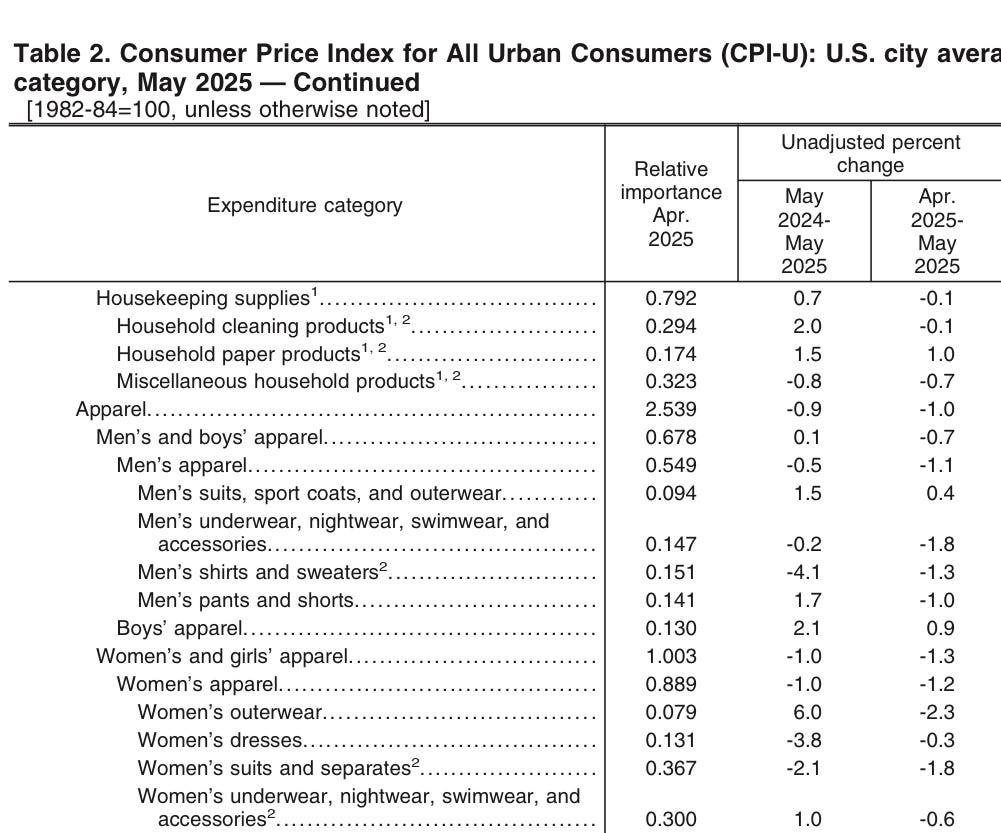Inflation, Tariffs & the Basket Case Economist
Why Every Wall Street Economist is a Basket Case on Their Forecast
Why Prices Aren’t Rising Where Tariffs Hit—and How Green Day Nailed the Psychology of Misreading Inflation
The latest inflation report is out—and once again, the headlines are louder than the data. Media outlets are panicking about tariffs and rising costs, politicians are blaming foreign imports, and central bankers are pretending they still control the narrative.
But the real story? It’s hiding in plain sight, in Green Days song:
“Sometimes I give myself the creeps… my mind is playing tricks on me.”
And that’s exactly what’s happening in the global inflation narrative today. The world is misreading what tariffs actually do, confusing pricing power with costs, and forgetting the most fundamental law of economics:
Prices aren’t determined by costs—they’re determined by demand.
🎯 The Tariff Myth: Higher Costs ≠ Higher Prices
Let’s use a real example: say Apple imports iPhones from China. If a 55% tariff is slapped on those imports, that raises Apple’s cost—not the price to the consumer. Apple can’t just raise prices 55%, unless there’s enough consumer demand at that new price point.
This is where basic Econ 101 kicks in:
If demand is inelastic, prices can rise. If demand is weak, prices fall.
Apple faces a saturated smartphone market, stretched consumers, and competition from cheaper Android devices. If they raise prices too much, demand collapses. So instead, they eat the margin loss or cut costs elsewhere. The same logic applies across the economy and other companies that import their goods like Apple..
📉 Inflation Report: Tariffed Goods Are Falling in Price
The latest CPI data proves this:
📱 Smartphones: -14.3% YoY
💻 Computers: -3.5% YoY
👕 Men’s Clothing: -4.1% YoY
👗 Women’s Clothing: -1% YoY
These are goods most exposed to tariffs—they’re manufactured abroad and shipped into the U.S., often from China or Southeast Asia. But despite those import taxes, prices are falling.
Why? Because:
Demand is weak. Consumers are pulling back on discretionary spending.
Supply is abundant. Global manufacturing capacity has never been more robust.
Retailers are overstocked. To avoid holding inventory, they are discounting heavily.
This is the core of Austrian economics: prices adjust downward when supply outpaces demand, even if input costs rise. If there’s no willingness to pay more, sellers must lower prices to clear inventory.
🍔 But Essentials Are Getting More Expensive
Contrast that with non-tradeable, domestic essentials:
🏠 Shelter: up significantly YoY
🐔 Chicken: up
🥩 Beef: up
🥚 Eggs: up
These goods are not imported, so tariffs don’t apply. But prices are rising because:
Demand is constant. People need food and housing regardless of price.
Supply is constrained. Zoning laws, labor shortages, and droughts limit growth.
Money supply has expanded. More dollars chasing the same number of homes or steaks drives prices higher.
Even dating back to 1971 to today (2025) during any recession period, food and rent never get cheaper—because they’re necessities. As long as the Fed keeps the money printer humming (low interest rates) and consumers must eat and live somewhere, those prices will keep climbing ( as shown in the graph below).
💡 The Green Day Principle of Inflation Psychology
This is where Green Day’s Basket Case hits deeper than most econ textbooks:
“I think I’m cracking up…”
People aren’t actually going crazy—but they are misunderstanding inflation. They assume tariffs = inflation, but they’re not asking the key economic question:
“Can the consumer bear that price increase?”
If it can’t, prices won’t rise—they fall.
This disconnect between cost increases and price stickiness is the blind spot in almost every inflation narrative. And it’s precisely why the Fed’s models keep failing along with everyone on Wall Street. Tariffs don’t cause inflation unless demand allows it.
🛡️ Golden Coast Advice: Own What Can’t Be Printed
We asked Greg Crennan, Chief Market Strategist at Golden Coast Consultants, how investors should position in this basket case economy.
Keep reading with a 7-day free trial
Subscribe to The Coastal Journal to keep reading this post and get 7 days of free access to the full post archives.







